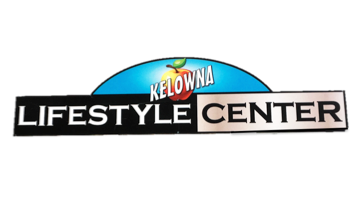
Heading to the grocery store during the COVID-19 pandemic? First things first: There’s no need to hoard. If you’ve noticed empty shelves at your local market, it isn’t because of any disruption in the food-supply chain; it’s because nervous shoppers have been stocking up more than is necessary. Don’t follow their lead.
Instead, be strategic about what you do purchase, prioritizing foods that have a longer shelf-life, myriad uses, and lots of nutrients. With all that in mind, here are 20 items to look for when grocery shopping in the coming weeks and months, starting with the most essential.
Beans
Beans are the ultimate staple food: They offer nutrients, satiety, a long shelf life—and virtually endless uses. Use them in place of meat in any recipe, add them to pasta or salads for extra bulk, blend them for moist brownie batter or a rich sauce—the sky’s the limit. Dried beans offer the better value; canned beans are already cooked and won’t break the bank, either.
Lentils
Lentils can add healthy heartiness to many different dishes, from soups, to salads, to stews, to wraps, to nachos. A quick rundown of the different kinds: Brown or green lentils are versatile and can be cooked al dente or simmered longer into a soft purée; French green (or Puy) lentils are ideal for salads and soups, as they hold their shape; black (or beluga) lentils are best for salads, bowls, and stews; and red lentils cook up softer, making them perfect for Indian-style dishes. Store them in airtight containers in a cool, dark, dry place.
Whole Grains
Rice and quinoa are the two most obvious choices here, but there are lots of other grains that will work just as well and can be used interchangeably in recipes. Dry grains offer the most bang for your buck; see our Grains Cooking Guide for cook times and yields. You may also find precooked whole grains in shelf-stable pouches near the dry grains. Check the freezer aisle for precooked versions, too.
Tubers (Potatoes and Sweet Potatoes)
Turn to trusty tubers for comforting nourishment. If available, buy one or two of several different varieties, such as Yukon Gold, Russet, fingerling, sweet potatoes. Though each has a unique flavor profile, all offer starchy satisfaction and a long shelf life (up to two months when stored in a cool, dark, dry place).
Onions
Onions have a long shelf life and offer loads of flavor. Whole, unpeeled onions will stay good for about a month when stored in a cool, dry, dark place. Peeled or sliced onions will stay good for about a week when stored in an airtight container in the refrigerator.
Garlic
Like onions, garlic can be essential to the flavor of many savory dishes, and you don’t have to worry about it going bad anytime soon. (Stored in a cool, dry, dark place, whole heads of garlic can last up to six months!)
Fresh Vegetables and Fruits
Many shoppers are heading straight to the frozen aisles lately, but there’s no reason to skip over fresh produce. Squash and carrots have long shelf-lives when stored in a cool, dark, dry place. You can freeze fresh produce, too: Most fruits and peppers can go straight into the freezer (once sliced and placed in freezer bags); while other fresh produce, such as tomatoes and leafy greens, benefit from a quick blanching first.
Canned Tomatoes
From pizza to pasta to Buddha bowls and beyond, canned tomatoes (and tomato sauce and paste) can make many a meal. They’re also one of the budget-friendliest ingredients around.
Frozen Vegetables and Fruits
Picked and frozen at peak nutritiousness, frozen veggies and fruits are equally nutritious to their fresh counterparts. And frozen fruit also makes for a delicious addition to nice cream. Look for frozen medleys, or mix and match a few favorites.
Oats
OK, technically, oats are whole grains—but they really do deserve a category all their own. Overnight oats and oatmeal offer a nourishing base that you can customize to any craving, from sweet to savory. And you can make your own oat flour: Place them in a blender or food processor and grind to a fine powder for use in recipes such as Sweet Potato Flapjacks and Raspberry-Apple Crumble.
Plant-Based Milk
If you buy your plant milk in the dairy section, by all means look there. If the store is sold out, check the center aisles for shelf-stable soy milk or almond milk, which will generally last up to six months unopened and can be used to make creamy sauces, baked goods, oatmeal or overnight oats, and more. Emergency or not, shelf-stable plant-milk is a smart thing to keep on hand just in case you run out. Opt for unsweetened, unflavored varieties: They’re not only the healthiest but also the most versatile.
Apples
Kept in the crisper drawer of your fridge, whole apples will stay good for a month or longer. For easy snacking, slice one or two apples at a time, sprinkle with lemon juice (to prevent browning), and store them in an airtight container in the fridge. Buy a mix of varieties—red and green, sweet and tart—to keep things interesting.
Bananas
In a plant-based kitchen, bananas are blessings: Mashed, they can be used as an egg substitute; sliced, they make a delicious topping for waffles, oatmeal, and pancakes; and when frozen, they can be blended for a delicious dairy-free ice cream or used to make banana bread or muffins. (Any time you notice bananas getting brown before you can eat them, take a moment to peel and transfer them to a freezer-safe container for future use.)
Citrus
Zested, juiced, or sliced, citrus fruits bring fresh, tangy flavor to any dish. Lemons, limes, and oranges all last around two to four weeks if stored in the crisper drawer of your refrigerator. Seal lemons and limes in ziplock bags for optimum storage.
Dates
Dates are a must-have in my kitchen. They last a very long time and are the perfect snack if you’re craving something lusciously sweet. They can be soaked and blended into date paste for a healthy sugar substitute. If dates aren’t available, look for raisins or dried apricots and mangoes for a sweet, shelf-stable treat.
Whole Grain Pasta
Pasta is an easy go-to when you’re looking for a hearty, easy meal, and dried pasta (stored in a cool, dark place) will last years. Buy a few different shapes and widths for variety.
Nuts and Seeds
Sprinkle nuts and seeds over sweet and savory dishes alike to add some satisfying crunch. Seed and nut butters can make for a tasty treat paired with celery, apples, and other veggies. Seeds and nuts and their butters are relatively high-fat and calorie-dense, so keep that in mind if you’re watching your weight.
Whole Grain Bread
Pre-sliced bread loaves freeze well, as you can remove one slice at a time as needed and place directly into the toaster oven. Pita bread is also great for quick and easy handheld meals, such as Sloppy Joes and Buffalo Cauliflower Pockets. Opt for whole grain varieties, which are loaded with fiber and will leave you feeling more nourished than white bread.
Whole Wheat or Corn Tortillas
Tortillas are versatile: Use them for tacos, burritos, wraps, tostadas, and more. You can even slice them into triangles for homemade chips. To make life easier on yourself, place a square of parchment paper between tortillas before freezing.
Condiments and Spices
You almost certainly already have the basic spices and condiments—such as salt, black pepper, vinegar, and mustard—but double-check, just in case.
